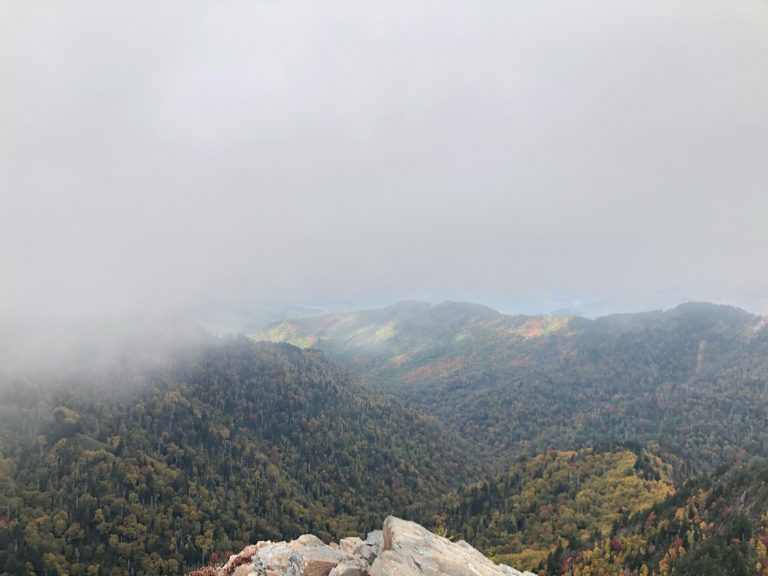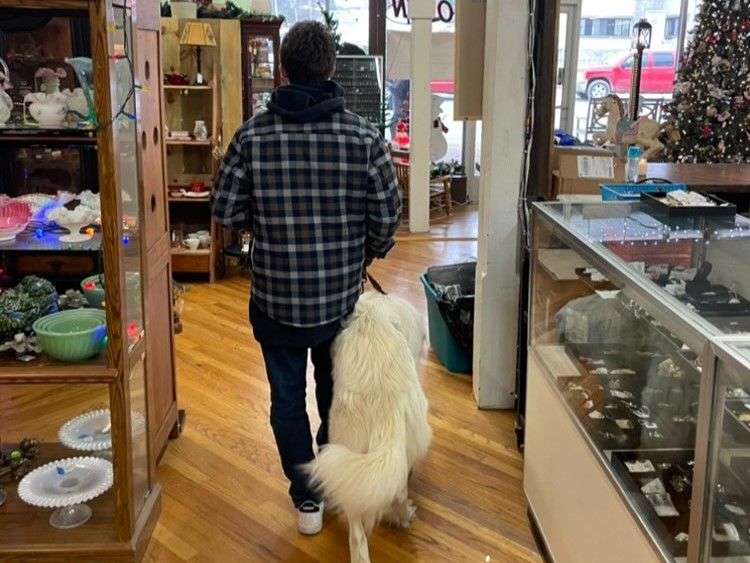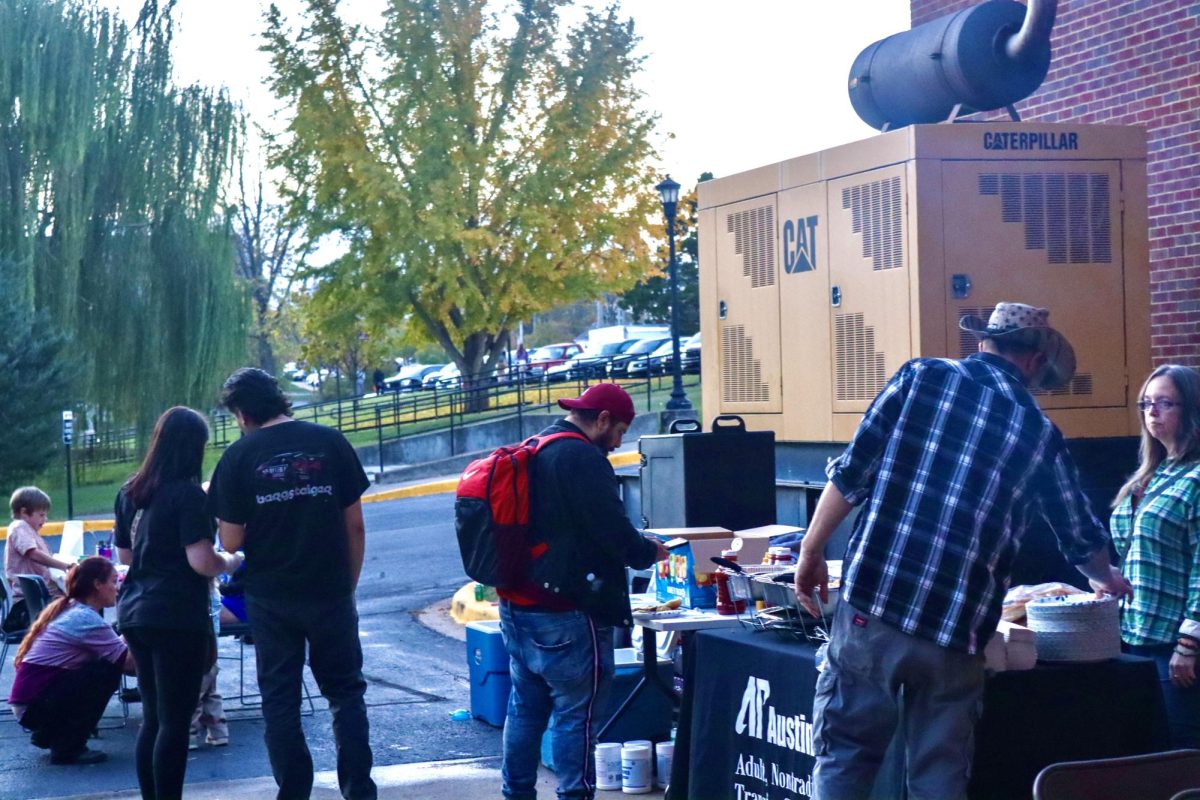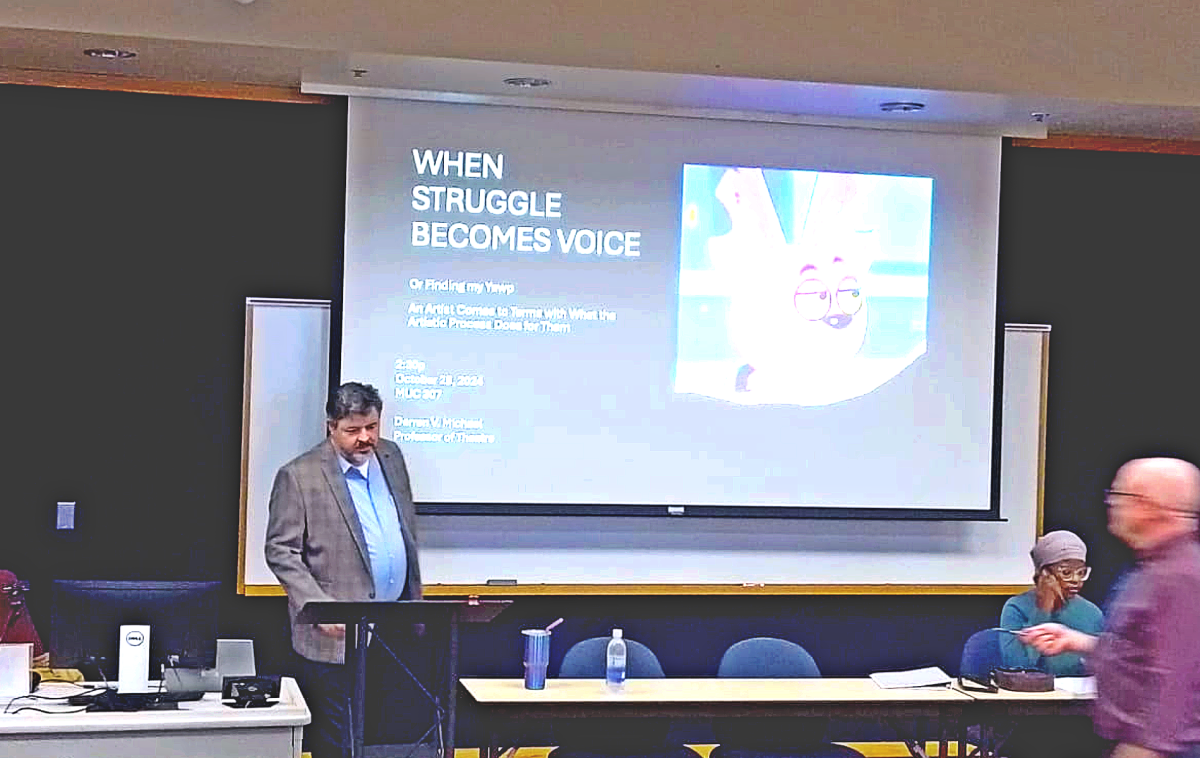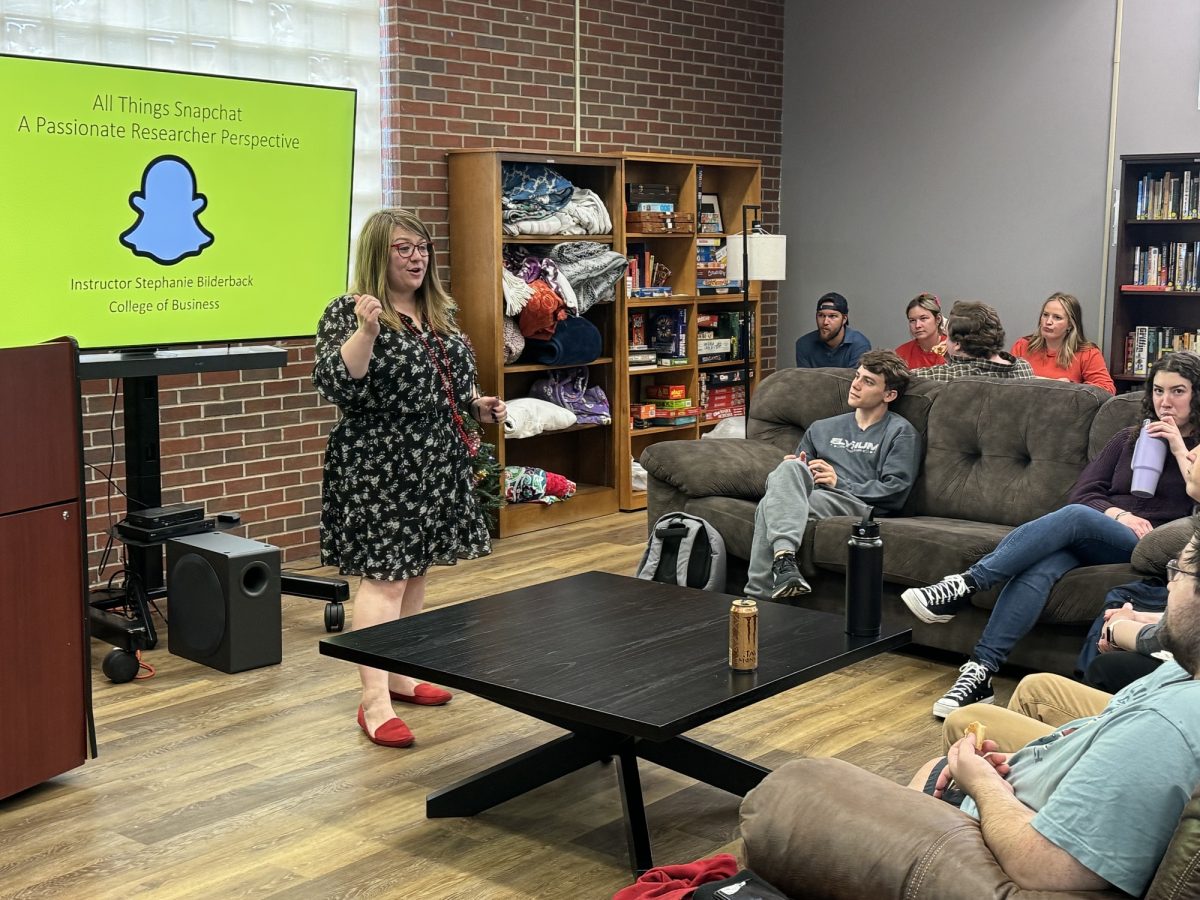This semester the Art department is challenging traditional art forms by exploring a different medium: sound.
The exhibit, “Sound,” is a collection of pieces around campus that embody the idea that sound is as a good tool for creating works of art as paint or chalk. Michael Dickins, gallery director at APSU and co-curator of the exhibits, said the idea was “not something you see every day. We’re exposing students to new possibilities.”
One of the displays is a set of stands in the grassy area between the University Center and the Woodward Library.
“Circumpliance,” as the display is called, was created out of piano pieces, through which speakers play 88 unique stereo tracks on a continuous loop.
According to a sign by the display, “Circumpliance” is designed to fall prey to the elements. “Wind and weather warp the wood, rust the metal, and split the keys,” the sign states. “Because of the exceedingly high number of permutations possible, the resulting music will almost assuredly be unique with each visit to the exhibit site.”
Dickins said the display was only one of many featured on campus. The main gallery is in the Trahern Building, where the gallery itself contains two lines of headset speakers, each playing different sounds and music, from the ambience heard while going to an Ohio state fair to the sound of playing all nine songs in a particular music album at once. The resulting sounds are vastly different and “provide unique experiences,” said Dickins.
He said the exhibit was designed in response to the growing number of artists exploring sound as a new medium.
“Why does a painter choose red over yellow?” Dickins said. “Should I swing the note? What pitch should it be? Artists are thinking of sound in the same way.”
Another exhibit is data-oriented. Wave data taken from a buoy off the coast of Cape Canaveral processed and transferred into sound waves, which are then used to vibrate a large bowl of water, creating a unique pattern. As the waves roll by and the high and low tides set in, the patterns fade away and new ones appear. “This is all in real time,” Dickins said. “The data is coming in directly from the buoy.”
Oneexhibit involves the windows in the main lobby of the Trahern Building, where speakers have been attached onto six window panels. Each speaker plays a particular sound at random, and the window itself becomes the speaker, causing the sound to echo through the building. “You can even hear it outside,” Dickins said. “From a good distance, too.”
Dickins said the exhibits will be around through Friday, Feb. 6.
“Sound” is open in the Trahern Building from nine a.m. to four p.m. TAS







